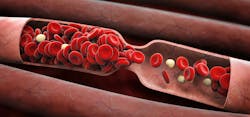University of Virginia School of Medicine researchers have created an “atlas of atherosclerosis” that reveals, at the level of individual cells, critical processes responsible for forming the harmful plaque buildup that causes heart attacks, strokes and coronary artery disease.
“To begin to develop effective treatments targeting specific disease processes in the vessel wall, we need to characterize gene expression programs at single-cell resolution,” said researcher Clint L. Miller, PhD, of the School of Medicine’s Center for Public Health Genomics, as well as its Departments of Biochemistry and Molecular Genetics and Public Health Sciences. “By establishing this map, we can inform strategies to reprogram dysregulated cell states in order to prevent or reverse the disease or identify biomarkers to assess a patient’s risk of having clinical events.”
Miller and his collaborators, led by graduate student Jose Verdezoto Mosquera, have built a “comprehensive single cell map of human atherosclerosis” encompassing almost 120,000 cells from atherosclerotic coronary and carotid arteries. In addition to charting broad cell lineages, the researchers leveraged this resource to dissect more granular and rare cell subtypes within atherosclerotic plaques.
The study also reveals new insights on the changes smooth muscle cells go through during disease progression, some of which contribute to the “calcification,” or hardening, of the coronary arteries. This led to the finding that two genes, LTBP1 and CRTAC1, can serve as measures for the progression of atherosclerosis.
The researchers have published their findings in the scientific journal Cell Reports.

